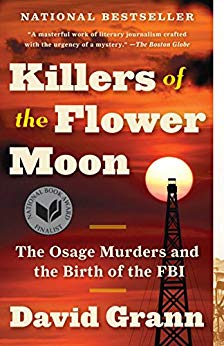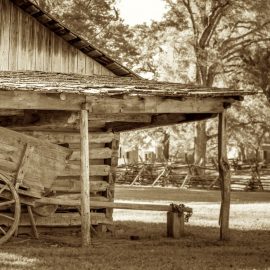

This article is an excerpt from the Shortform summary of "Killers of the Flower Moon" by David Grann. Shortform has the world's best summaries of books you should be reading.
Like this article? Sign up for a free trial here .
What are headrights? How did the headright system work? How did it lead to the Osage murders?
The headright system was established when oil was discovered on the land of the Osage tribe. Headrights eventually led to several (if not many) murders as some people tried to co-opt the wealth of the Osage people.
Read more to understand headrights and their tragic legacy.
What Are Headrights?
To understand headrights, you first need to see how the situation of the Osage Tribe changed rapidly. In the late 19th century, oil had been discovered on the tribal reservation of the Osage people, who lived primarily in Osage County, Oklahoma. The tribe had suffered the loss of its tribal lands and been decimated by both smallpox epidemics and military defeats by the United States throughout much of the century. But, overnight, the oil discovery turned the tribe into one of the wealthiest per-capita groups in the world, with the total tribal income from leases to the oil companies running into the tens of millions and leases on individual tracts climbing as high as $2 million.
To manage this influx of money, the Osage tribal leadership instituted a headright system, under which each member of the tribe was entitled to annual royalties from the oil production, distributed in equal measure to members of the tribe. Although individuals could sell their surface land, they could not buy or sell headrights—these could only change hands through inheritance. This system was meant to ensure tribal control of the oil wealth in perpetuity and helped explain the headright system to tribal members.
While individual Osage had been barred by the Tribal Council from buying or selling headrights, they could be inherited. This is why the headright system’s significance is clear in the murders. An Osage who suffered many deaths in their family could find themselves with title to multiple headrights. As investigator Tom White studied the probate records dealing with the estates of murdered Osage, the outline of the murderous plot began to make sense.
Mollie Burkhart’s Role
Many of the headrights of the victims had been willed to Mollie Burkhart. When all of this money came to Mollie, it would be easy for Hale to exercise control of it through his easily manipulated nephew Ernest—though it would be even easier if Mollie were to be killed, too. This was why Mollie’s family was being systematically eliminated. Through an oil headright system and life insurance policies, Hale and his conspirators had a direct financial stake in the deaths of many Osage.
As he studied the probate records, Tom discovered that many headrights had come into the possession of Mollie Burkhart, married to Ernest Burkhart, nephew of William Hale. Ernest was known to be highly influenced by his domineering uncle. When all of this money came to Mollie, it would be easy for Hale to exercise control of it through his nephew—though it would be even easier if Mollie were to be killed, too.
This explained the headrights and the headright system’s significance to White, as he analyzed the precise pattern and order of deaths in Mollie’s family. The divorced and childless Anna had been the first to be eliminated, with her headright going to her mother Lizzie. Killing Anna first ensured that her assets would not be divided up between multiple heirs. Lizzie herself was the next target, having willed her headrights to Mollie and Rita, her surviving daughters. The headright system’s significance is clear in how it would benefit Ernest Burkhart.
This also explained why the next victims, Bill and Rita Smith, had died in a bombing attack, which was an unusual method of killing. In fact, the Smith murders were done this way because it was critical that the two died at the same time. If only Rita had died, her headrights would have gone to her husband Bill Smith. But because the couple died mere days apart, Rita’s headright reverted to her only surviving heir—Mollie. It all began to make sense as the outlines of the murderous plot became clear to Tom White. By conspiring to have all the members of Mollie’s family killed, Hale was maneuvering to have all their headrights bequeathed to her. Once Mollie herself was murdered, the oil wealth would be his to exploit.
Response to the Murders
In response to the murders, the Osage Tribal Council changed the headright system. They persuaded Congress to pass a law barring anyone who was not at least half-Osage from inheriting a headright, removing some of the incentive for whites to murder them. Anna divorced Ernest shortly after he was sent to prison, revolted and outraged by what he and his family had done to her loved ones. She remarried and was restored to full financial competence (freeing her from the corrupt guardianship system), before passing away in 1937.
Tom White became the warden of the U.S. penitentiary at Leavenworth, Kansas, where he was known for his relatively humane treatment of inmates and support for a more rehabilitative approach to criminal justice. In 1931, he was shot in the arm by a gang of inmates attempting to escape. Although he survived, he permanently lost the use of his left arm. After retiring in 1951, White attempted to publicize his role in cracking the Osage case but was coolly rebuffed by the self-aggrandizing Hoover, who had little use for his former star agent. After failing to find a publisher for his memoirs, White died in 1971, an obscure and largely forgotten figure.
Today, much of the wealth of the Osage has evaporated, as oil prices plunged beginning in the 1930s, thanks to over-drilling and the discovery of new petroleum sources elsewhere in the world. As early as 1931, the value of an Osage annual headright had plummeted to $800. In 2012, a sale of three leases went for less than $25,000. The former boomtowns had turned into decaying and desolate ghost towns.
When you explain the headright system, it’s important to understand how the headright system affected the Osage tribe and led to incredible tragedy. While headrights did help build short-term wealth, they, amongst other factors, contributed to the murder conspiracy.

———End of Preview———
Like what you just read? Read the rest of the world's best summary of David Grann's "Killers of the Flower Moon" at Shortform .
Here's what you'll find in our full Killers of the Flower Moon summary :
- How the Osage tribe had vast oil wealth, but had it seized by their murderous neighbors
- The brutal and unresolved murders of Osage Native Americans
- The complicated history of the FBI in profiting from the Osage murders





